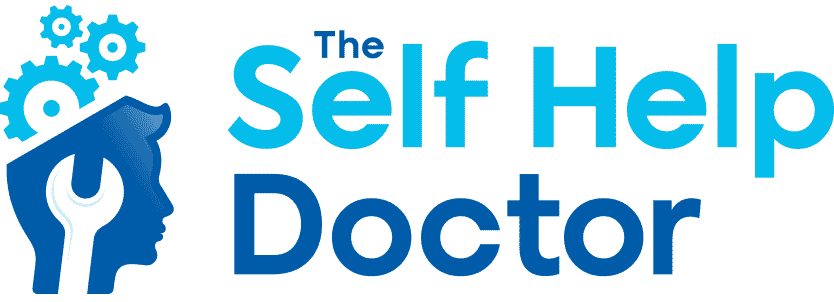The Hidden Emotional Causes of Trichotillomania and How to Address Them

Table of Contents
- Introduction: Understanding Trichotillomania
- What is Trichotillomania
- The Emotional Roots of Trichotillomania: Going Beyond the Symptoms
- Causes of Trichotillomania: Stress, Negative Thoughts, and Emotional Triggers
- Common Symptoms of Trichotillomania
- How CBT Helps: Addressing Emotional Triggers, Not Just Symptoms
- Effective Stress Relief: Preventing the Build-Up of Emotional Tension
- Habituation and Long-Term Change
- Conclusion: Lasting Solutions Through Emotional Regulation
- What’s Next?
Introduction: Understanding Trichotillomania
Trichotillomania, often called hair pulling disorder, is a condition where individuals feel an irresistible urge to pull out their hair, leading to noticeable hair loss and emotional distress. It’s not just about the hair; it reflects deeper emotional patterns that manifest in this behavior. As a psychologist specializing in Cognitive Behavioral Therapy (CBT), I often work with patients facing this challenge, using a unique approach that focuses on managing underlying emotional habits rather than just addressing the symptoms.
Here I’ll review what Trichotillomania is, the causes behind hair pulling, and how treatments like CBT can help. We’ll dive into how understanding and managing emotions, rather than simply suppressing them, can lead to lasting change.
1. What is Trichotillomania?
Trichotillomania is classified as a Body-Focused Repetitive Behavior (BFRB), where individuals pull out hair from their scalp, eyebrows, eyelashes, or other parts of the body. This condition goes beyond just being a “bad habit”; it often serves as a coping mechanism for underlying emotional tension.
People with Trichotillomania may experience a sense of relief or gratification from pulling hair, though this relief is temporary. Over time, it can lead to feelings of shame, anxiety, or embarrassment due to visible hair loss and the loss of control over the behavior.
2. The Emotional Roots of Trichotillomania: Going Beyond the Symptoms
Rather than focusing solely on trying to stop the hair-pulling behavior itself, I help my patients address the emotional habits that drive the behavior. Negative thoughts, rumination, poor emotional tolerance, avoidance, and a lack of tension relief behaviors are often the underlying culprits. When people experience stress, fear, or negative emotions without an adequate release for this tension, they may experience a build-up of tension over time which eventually leads to automatic behaviors to relieve the tension, such as hair pulling, skin picking, nail biting, and other behaviors. However, these behaviors only provide temporary relief and often end up reinforcing the unhealthy emotional coping style.
For example, “Alice” might have a tendency to be critical of herself. Each time she criticizes herself, she feels a bit of stress. She also may not be proactive about relieving tension on a regular basis. Over time, she experiences a build-up of tension. With nowhere to go, she finds herself pulling hairs when she is not busy, leading to a temporary relief of tension. After a while, she begins to criticize herself for this behavior, leading to a negative cycle of criticism –> stress –> hair pulling –> criticism. Over time, this cycle becomes habitual and automatic, making it more difficult to break.
3. Causes of Trichotillomania: Stress, Negative Thoughts, and Emotional Triggers
The exact cause of Trichotillomania varies from person to person, but certain emotional and psychological factors contribute significantly:
- Stress and Anxiety: High levels of stress can trigger hair-pulling as a form of self-soothing.
- Negative Thoughts and Ruminating: Persistent negative thoughts increase emotional tension, making compulsive behaviors more likely. In Trichotillomania, hair-pulling can be an unconscious attempt to reduce emotional discomfort.
- Poor Emotional Tolerance: Individuals who struggle with tolerating uncomfortable emotions (fear, sadness, frustration) may resort to pulling hair as a way to distract or numb themselves from these emotions. Or they may try to avoid these emotions causing a build-up of internal tension. This creates a harmful cycle where the behavior reinforces the negative emotional response.
These emotional patterns often create a “fear-of-fear” response, where an individual reacts negatively to their own emotions and ends up exacerbating them with their negative reaction. Ultimately they find themselves turning to automatic behaviors to relieve these emotions, including engaging in compulsive behaviors.
4. Common Symptoms of Trichotillomania
While hair-pulling is the most visible symptom of Trichotillomania, it is important to recognize the emotional and behavioral symptoms that accompany it. These include:
- Feelings of shame or guilt following hair-pulling episodes
- Anxiety related to hiding hair loss or avoiding social situations
- Negative self-perception or low self-esteem, worsened by the inability to stop pulling hair
- Avoiding situations that are emotionally uncomfortable, or where others may notice bald spots due to hair pulling
5. How CBT Helps: Addressing Emotional Triggers, Not Just Symptoms
Cognitive Behavioral Therapy (CBT) is one of the most effective treatments for Trichotillomania because it doesn’t just focus on stopping the behavior—it helps the individual understand and change the emotional patterns driving the behavior.
My CBT approach emphasizes:
- Recognizing Negative Thought Patterns: I teach patients how to identify the negative thoughts and ruminations that increase stress which can build up over time and lead to the urge to pull hair. By reducing these thoughts, patients experience less emotional pressure and, over time, fewer urges to pull hair.
- Improving Emotional Tolerance: Many people with Trichotillomania have difficulty tolerating uncomfortable emotions. They might see these emotions as threats, which they feel the need to avoid or control. These negative reactions can lead to an increase in uncomfortable emotions and ultimately to automatic behaviors to relieve tension like hair-pulling. Through CBT, patients learn that emotions, while uncomfortable, are temporary and manageable. Over time, they gain confidence in their ability to tolerate these emotions without resorting to harmful habits.
- Building Self-Esteem: A lack of confidence in handling emotions often perpetuates the cycle of hair-pulling. When people believe they can’t handle stress or emotional discomfort, or are shamed of their hair pulling behavior, they are more likely to engage in avoidance behaviors. Building self-esteem helps break this cycle. Patients learn to accept emotional discomfort or temporary changes in appearances as a normal part of life, without lowering their self-esteem which only reinforces stress and hair pulling.
6. Effective Stress Relief: Preventing the Build-Up of Emotional Tension
Another key aspect of my approach is teaching individuals how to proactively manage and relieve stress before it builds up and manifests as compulsive behaviors. This includes:
- Daily Techniques: Simple exercises that can be incorporated on a daily basis – like deep breathing, mindfulness, and progressive muscle relaxation – can help relieve tension before it leads to hair-pulling.
- Incidental Techniques: Exercises intended to be performed during moments of stress to relieve spikes of tension – such as a sport, going for a walk, hitting a pillow, talking to a friend, or hobbies that allow emotional release.
By learning to reduce stress both on a daily basis as well as during moments of tension, individuals have less emotional fuel feeding the urge to pull hair.
7. Habituation and Long-Term Change
A crucial part of recovery is habituation—the process of reducing the emotional response to a trigger over time. Through repeated exposure to the triggers and the learning that the emotions will subside naturally, patients gradually become less reactive. With increased emotional tolerance and proactive stress management, the hair-pulling behavior often fades away as it no longer serves a purpose in their emotional regulation.
For example, an individual with a tendency to avoid uncomfortable situations may learn with the help of habituation exercises that uncomfortable emotions are not so unbearable, and subside quickly if she allows herself to experience them freely.
8. Conclusion: Lasting Solutions Through Emotional Regulation
Trichotillomania can feel overwhelming and difficult to manage, but with the right approach, lasting change is possible. By addressing the emotional habits that drive hair-pulling behavior—such as negative thinking, poor emotional tolerance, and ineffective stress relief—patients can regain control over their emotions and their behaviors.
Cognitive Behavioral Therapy (CBT) is highly effective in this journey because it empowers individuals to understand and change the emotional patterns at the root of their compulsive behaviors. With time, patience, and consistent practice, people with Trichotillomania can build healthier emotional habits, reduce their symptoms, and improve their overall well-being.
9. What’s Next?
If you’re struggling with Trichotillomania or similar habits, I’ve created a free video series that explains more in-depth how unhealthy emotional habits contribute to issues like hair pulling.
In this short mini-course, you’ll learn why addressing these habits is key to overcoming the behavior, without needing a therapist.
You’ll also have the option to sign up for my full 12-week course, where you’ll learn practical skills to reduce hair pulling and take control of your emotional health.
Click here to watch the free video series and start your journey today!




